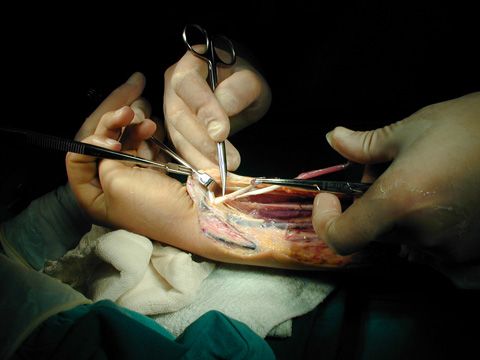Tendon transfer surgery is, after the loss of hand functions due to various reasons, shifting a working tendon from its original attachment to a new one in order to restore the action that has been lost.
Many different conditions can be treated by tendon transfer surgery.
When an injured nerve is not treated after a nerve injury or when no improvement is gained despite the treatment, the loss of muscle function occurs as the nerve no longer sends signals to certain muscles. Tendon transfer surgery is performed to restore the lost functions. Tendon transfer surgery is applied mostly for brachial plexus, radial nerve, ulnar nerve, or median nerve injury.









